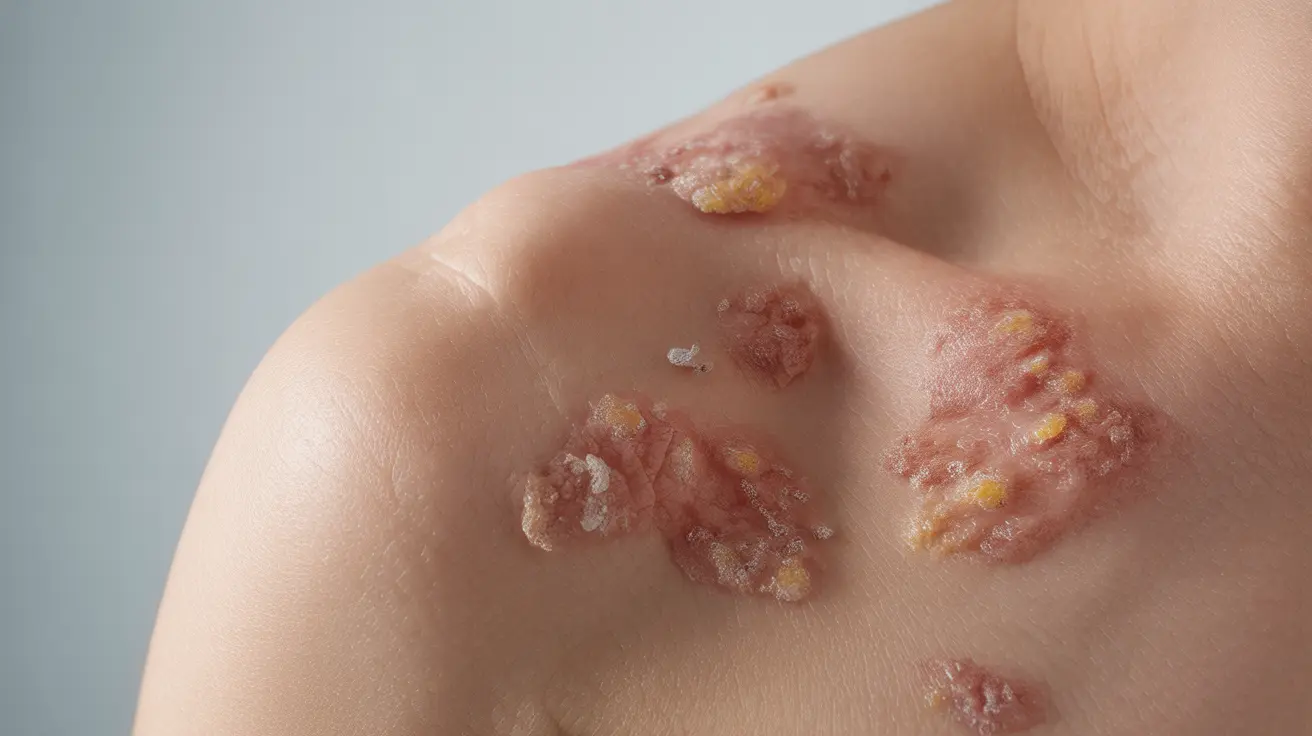Sebopsoriasis is a complex skin condition that combines features of both seborrheic dermatitis and psoriasis. This unique dermatological condition can cause significant discomfort and affect various areas of the body, particularly the scalp, face, and other sebum-rich areas. Understanding its characteristics and management options is crucial for those affected by this condition.
While less commonly discussed than its component conditions, sebopsoriasis requires specific attention and treatment approaches due to its dual nature. This comprehensive guide will explore the condition's symptoms, causes, treatment options, and management strategies to help those affected make informed decisions about their care.
Understanding Sebopsoriasis
Sebopsoriasis presents as a hybrid condition that shares characteristics of both seborrheic dermatitis and psoriasis. This overlap can make diagnosis challenging and requires careful evaluation by healthcare professionals. The condition typically affects areas where sebaceous glands are most active, such as the scalp, face, chest, and back.
Key Characteristics and Symptoms
The distinctive features of sebopsoriasis include:
- Red, inflamed patches of skin
- Greasy, yellowish scales
- Silvery-white flakes
- Itching and burning sensations
- Areas of skin thickening
- Potential hair loss in affected areas
These symptoms can vary in severity and may fluctuate over time, with periods of remission and flare-ups being common.
Diagnosis and Differentiation
Healthcare providers diagnose sebopsoriasis through careful examination of skin symptoms and medical history. The condition's unique presentation often shows:
- More inflammation than typical seborrheic dermatitis
- Less thick scaling than classic psoriasis
- Characteristic distribution in sebum-rich areas
- Response to both anti-seborrheic and anti-psoriatic treatments
Treatment Approaches
Managing sebopsoriasis typically requires a multi-faceted approach that addresses both components of the condition. Treatment options may include:
Topical Treatments
- Medicated shampoos containing ketoconazole or selenium sulfide
- Corticosteroid preparations
- Calcineurin inhibitors
- Combined antifungal and anti-inflammatory medications
Systemic Treatments
In more severe cases, healthcare providers might recommend:
- Oral antifungal medications
- Systemic psoriasis treatments
- Light therapy (phototherapy)
Lifestyle Management Strategies
Several lifestyle modifications can help manage sebopsoriasis:
- Maintaining good skin hygiene
- Using gentle, non-irritating skin care products
- Managing stress levels
- Avoiding known triggers
- Following a balanced diet
- Staying hydrated
Prevention and Long-term Management
While sebopsoriasis cannot be completely prevented, several strategies can help reduce flare-ups:
- Regular use of prescribed medications
- Consistent skincare routine
- Prompt treatment of early symptoms
- Regular medical follow-up
- Stress management techniques
Frequently Asked Questions
What are the main symptoms of sebopsoriasis and how does it differ from seborrheic dermatitis or psoriasis?
Sebopsoriasis combines symptoms of both conditions, showing red, inflamed patches with both greasy, yellowish scales (typical of seborrheic dermatitis) and silvery-white scaling (characteristic of psoriasis). It typically affects sebum-rich areas and shows intermediate features between the two conditions.
What are the best treatment options for managing sebopsoriasis on the scalp and face?
The most effective treatment typically involves a combination approach using medicated shampoos containing antifungal agents, topical corticosteroids, and calcineurin inhibitors. Treatment plans should be personalized and monitored by a healthcare provider.
Can sebopsoriasis be cured, or is it a lifelong condition that requires ongoing management?
While sebopsoriasis cannot be permanently cured, it can be effectively managed with proper treatment and lifestyle modifications. Long-term management is typically necessary to control symptoms and prevent flare-ups.
What lifestyle changes or home remedies can help reduce sebopsoriasis flare-ups?
Key lifestyle changes include maintaining good skin hygiene, using gentle skincare products, managing stress, avoiding triggers, following a healthy diet, and staying well-hydrated. Regular moisturizing and gentle cleansing can also help manage symptoms.
What causes sebopsoriasis, and are there any known risk factors or triggers?
Sebopsoriasis is believed to result from a combination of genetic predisposition and environmental factors. Common triggers include stress, hormonal changes, certain medications, weather changes, and skin microbiome imbalances. Having a family history of either psoriasis or seborrheic dermatitis may increase risk.




